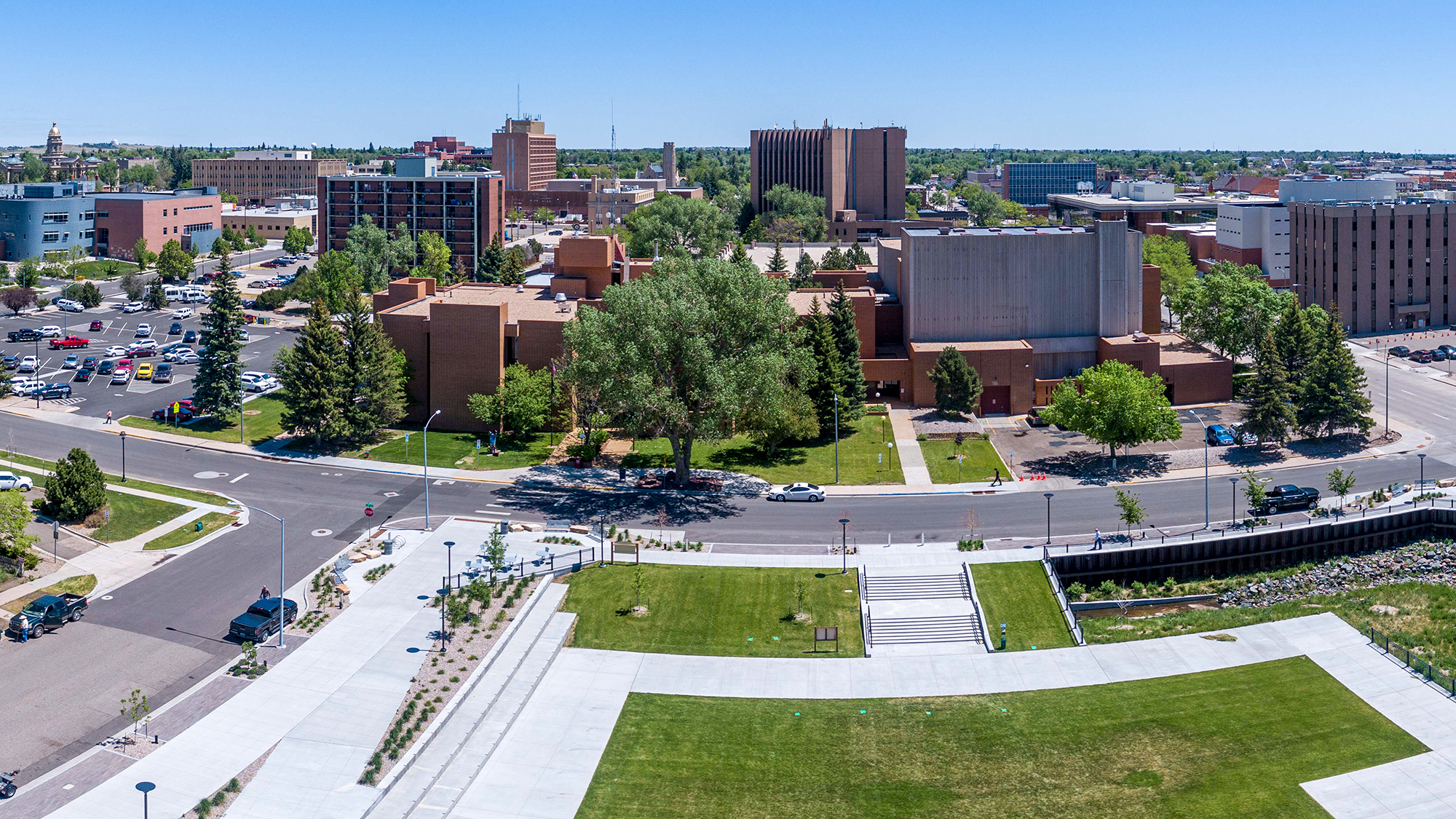
By Hannah Black
Wyoming Tribune Eagle
Via- Wyoming News Exchange
CHEYENNE – Colorado communities may provide a model for the state’s northern neighbors in finding ways to increase affordable housing stock.
Cheyenne’s pursuit of housing affordability for people across the income spectrum has led to recent reports and discussion among city leaders and staff.
In October, the city’s Affordable Housing Task Force unveiled a report that showed what stakeholders have known for some time: the state capital needs more housing that is affordable to a wider range of people, and it needs it soon. The city’s population is growing, but the number of units affordable for low- and middle-income individuals and families is shrinking.
In addition, at least a few hundred workers are expected to move to the city – though temporarily – in connection with upgrades to missile systems at F.E. Warren Air Force Base.
The task force’s chairperson, Brenda Birkle, and Mayor Patrick Collins have pointed specifically to Longmont, Colorado, as a municipality whose work in the affordable housing space could serve as an example for Cheyenne’s way forward. The city of about 100,000, located less than 80 miles south of Cheyenne, also has a regional affordable housing partnership with Boulder County as a whole.
In Cheyenne, the task force said, creating more affordable housing would likely mean increasing housing density, allowing more flexibility in the types of building materials developers can use, and creating a permanent office or group within city government dedicated to affordability.
The task force also recommended Cheyenne establish a housing trust fund, which Birkle said would serve as a way to manage funding that comes through an eventual statewide housing trust fund.
A proposal for a statewide housing trust fund died in the Legislature’s Joint Corporations, Elections and Political Subdivisions Committee earlier this year, but Rep. Dan Zwonitzer, R-Cheyenne, who co-chairs the committee, told WyoFile that it would likely be sponsored in the 2023 general session by individual legislators, “probably” including himself.
Since the 1990s, Longmont has had a housing trust fund that is “completely locally funded,” said Molly O’Donnell, director of the city’s Housing and Community Investment division. The Longmont City Council commits a portion of the city’s general fund to the trust fund each year. O’Donnell said this adds about $1.3 million annually to put toward affordable housing efforts. She described the housing trust fund as a “revolving loan fund.”
“We loan out the funds, and then these developers can pay them back over time – sometimes they’re deferred for quite a long time – and then it will replenish itself consistently,” O’Donnell said. “So, that has been really instrumental in achieving our unit generation goals here, and it’s really desirable, because it doesn’t come with strings attached, other than you must deed restrict for it to be permanently affordable.”
The rest of the money in the trust fund comes from in-lieu fees, which developers of market-rate housing can opt to pay instead of making 12% of their development “deed-restricted affordable units,” as required by the city’s “inclusionary zoning” ordinance, also first implemented in the ‘90s.
The city then puts these fees toward developing affordable housing.
Because the trust fund is fed by local sources, the city doesn’t depend on hard-to-get federal money, which often also comes with stipulations, O’Donnell said.
The city considers “affordable housing” to be “homes sold at a price that is affordable to households at or below 80 percent of the Area Median Income (AMI) and units rented to households at or below 50% of the AMI,” according to its website.
While Cheyenne’s task force recommended the establishment of a housing trust fund, it rejected inclusionary zoning in its report as “difficult to enforce” and something that may actually decrease the number of affordable units. The report says that these units typically do “not retain affordability over time.”
O’Donnell emphasized that developers were “heavily” involved in the creation of Longmont’s inclusionary housing ordinance.
“We want to meet our goals for affordable housing, but we don’t want to make our programs so restrictive that nobody actually builds the units,” she said. “We had to make sure we balanced meeting our overall, you know, moral goal here of providing housing for those that need it, but balancing making our programs attractive enough that builders will participate.”
The result of this “extensive stakeholder process,” O’Donnell said, was a lot of flexibility for developers. Rather than choose only between making 12% of a development’s units affordable or paying an in-lieu fee, developers in Longmont have a number of other options, such as building the required affordable housing on a different site or donating land the city can dedicate to affordable units.
However, the housing director warned that this added flexibility comes with more complexity, meaning a greater need for dedicated staff time and greater monetary costs.
Longmont’s affordable housing office currently consists of four full-time employees and a part-time accountant. Duties of these full-time employees include running the inclusionary housing program and managing federal money the city receives for affordable housing efforts.
O’Donnell said the city has dedicated most of the money it’s received from the American Rescue Plan Act to affordable housing.
When establishing an affordable housing office, it’s “critical” to have some type of grants management position to connect the city with funding sources, whether those are local, state or federal, O’Donnell said.
The city housing office is separate from the Longmont Housing Authority but works alongside it.
O’Donnell said municipalities throughout the country, including Cheyenne, have reached out to Longmont, seeking solutions to their affordable housing issues. She said Cheyenne was especially curious about the housing office’s size, its budget and what it took to create the office.
Mayor Collins and some members of the current city council have signaled an openness to various approaches to increasing affordable housing stock, including those recommended by the task force.
Collins previously told the Wyoming Tribune Eagle that, however Cheyenne chooses to try to increase housing affordability, the government will have to be involved.
“To create affordable housing requires subsidies, whether that’s in land or infrastructure or all of the above,” the mayor said earlier this month. “The typical low-income housing that you see now, about 70% of the cost of those buildings come from tax credits and things like that. Without those tax credits, it’s almost impossible to replicate that.”
Longmont works with other Boulder County communities through the Boulder County Regional Housing Partnership, “a cross-jurisdictional working group to address escalating housing costs across” the county.
By 2035, Boulder County communities hope 12% of their residential units will be considered affordable. At the end of 2021, 6% of Longmont’s total housing, or 2,456 units, was deed-restricted affordable. O’Donnell acknowledged the 12% goal is “pretty aspirational,” but seemed resolved to work toward it.
“We’re trying to get up to 5,400 units by 2035, which means, I think, we need to build something like 200 units a year – which is a challenge, but that’s our goal, and we’re almost halfway there,” she said.
Kurt Firnhaber is the director of Housing and Human Services for the city of Boulder, Colorado. He said the Regional Housing Partnership, established about five years ago, is “primarily driven by” the city of Boulder, which is the county seat, and Longmont, the county’s second most populous city.
The 12% goal by 2035 “set the stage for policy changes in each of the communities to support affordable housing,” he said, and many Boulder County communities, like Longmont and Boulder, now have inclusionary housing requirements.
The BCRHP’s view of affordable housing differs from other similar organizations across the country, Firnhaber said.
“I guess our view is that it’s so expensive to create affordable housing, and it’s really a community asset, that it should be affordable for future residents in perpetuity,” he said.
This is achieved through establishing deed restrictions.
The city of Boulder also has a homeownership program that aims to make homes permanently affordable. The cost of homes under this program increases about 2-2.5% each year, which Firnhaber said is similar to the rate at which household incomes in the area rise annually. Boulder requires 25% of units within new developments to be considered affordable – more than double Longmont’s requirement.
Firnhaber said that 25% requirement is on the “upper end” across the U.S.
“But, by and large, 90% of developers will pay cash-in-lieu instead of building the units, and we actually prefer that,” he said. “It’s not really politically correct, but it gives us resources that we can combine with federal low-income tax credits and other resources to actually build our affordable housing at a deeper affordability.
“For every local dollar that we raise, we can get $5 of federal tax credits, and if a developer is building 25 houses, they can’t really access those kinds of resources,” Firnhaber explained. “So, we’re able to make the money go a lot further and have a bigger impact.”
Boulder has also been more ambitious in its goal to have 15% of total units in the city classified as affordable, versus the 12% agreed to by every other Boulder County community. Firnhaber said Boulder is at about 8.5% right now, but that currently, 35% of housing being built in the city is affordable units – which he considers “making pretty good headway.”
Only about 5% of units in Boulder County as a whole are affordable, but the housing director said those numbers were last run before the COVID-19 pandemic.
What pushed Boulder County to establish the Regional Housing Partnership, Firnhaber said, was recognition of a growing problem and a realization that the county’s smaller communities weren’t going to have the necessary resources to make a dent in the issue.
“When you get different cities to work together collaboratively, you can come up with bigger solutions, and you can go after bigger resources,” he said.





